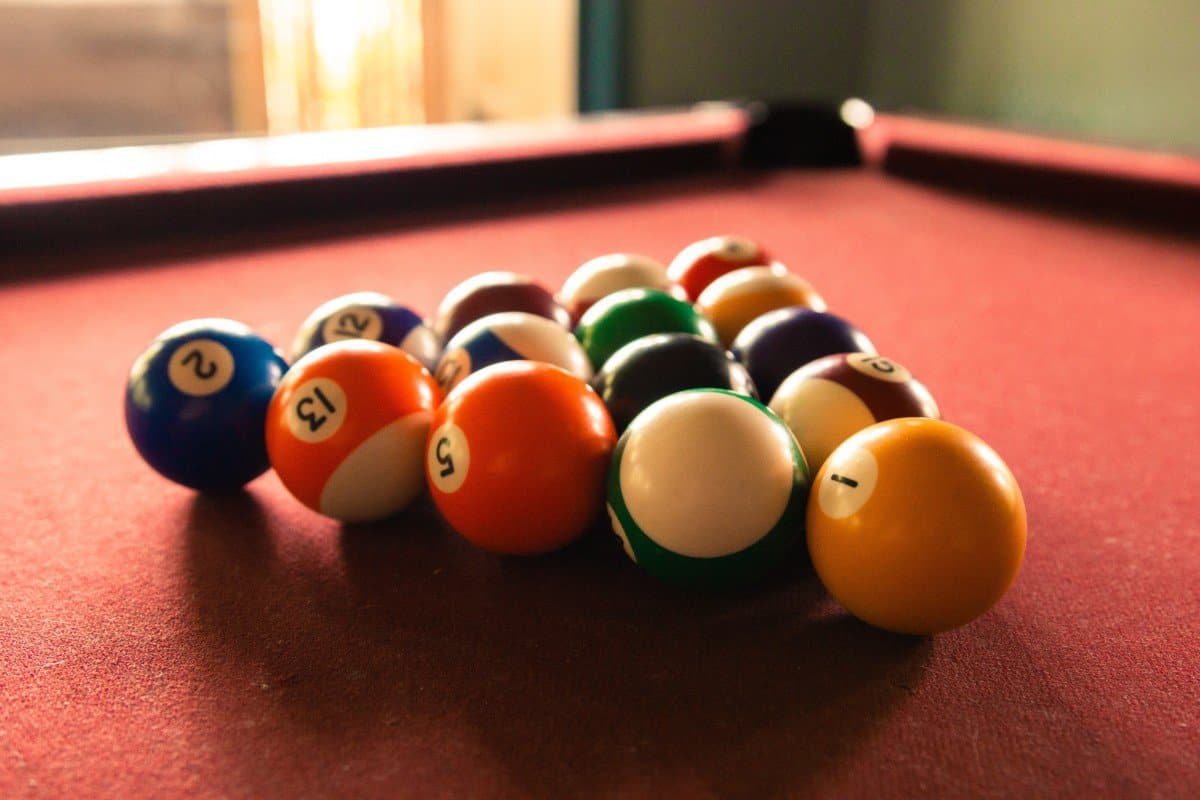Whether you are a novice or a seasoned pool player, it can improve your game to know the ins and out of pool balls. Whether certain ones weigh more than others, what material they are made out of, and what the colors mean can make an impact.
Here is a table explaining the features of pool balls
| Weight | Color | Material |
| Pool balls typically weigh the same, which is around six ounces, though sometimes it is a little less. | Half of the balls are solid and half are striped. They come in many different colors. | Pool balls are made out of different types of resin. They used to be made out of ivory from elephants until the mid-19th century. |
There are a lot of different aspects to learn about when it comes to pool balls. Keep reading to find out more about their weight, color, material, and more.
How Much Does a Pool Ball Weigh?
The size, shape, and number of pool balls has been standard for centuries. This makes sense considering the game was first recorded in the 1300’s. No matter where you go, the balls you play with will be the same.
As we mentioned above, billiard balls typically weigh between five and a half to six ounces, or between 156 and 170 grams.
This is especially true due to the mass manufacturing techniques. The weight definitely fluctuated when other materials were used to make them, but any now large change in weight would disqualify a ball from use.
Is a Cue Ball Heavier than a Pool Ball?
We’ve clarified that pool balls all weigh the same, but what about cue balls, which can also be called white balls?
Cue balls do not weigh more. They are also the same size and shape. The only difference would be with old coin operated games, which tend to have their cue balls weigh a little bit more, but it is not typically noticeable.
Are Cue Balls Different from Pool Balls?
There are several key things that differentiate cue balls from pool balls however.
These include:
- Color: Cue balls are the only solid white ball in a billiard set.
- Use: A cue ball obviously gets a lot more wear and tear and so often will show more signs of use than the rest of the pool balls.
- Red dot: Some cue balls also have a red dot on one side. This allows players to watch the spin on the ball.
Now you know the difference between the cue ball and the pool balls.
What Are Pool Balls Made Out Of?
Pool has been around a long time and so has gone through many changes. It actually originally started off as an outdoor game, similar to croquet, before evolving to the indoor game we know now. But what are the balls made out of?
Here are some examples from the past and what they are made of now:
- Wood: As it was accessible and cheap, wood was commonly used to create pool balls.
- Ivory: As we briefly mentioned, pool balls were often made out of ivory from elephant tusks. This exotic material was considered a luxury item and was a status symbol to own.
- Celluloid: Invented in the late 19th century, celluloid was a mixture of nitrocellulose, camphor, and alcohol. It was much cheaper and faster to produce than wood or ivory.
- Resin: Today pool balls are made of either phenolic or polyester resin, which are both plastic compounds.
Pool has a rich history and it’s certainly changed a lot from its humble beginnings. Currently phenolic resin is the most popular choice and actually makes about 85% of pool balls in use.
What Colors Do Pool Balls Come In?
Different sets can have varying colors and numbers of balls, but does it mean anything specifically? The short answer is no, the colors of pool balls don’t directly affect the game. What matters is the numbers on the balls, which tells you how many points that ball can earn you.
Standard colors in a set include eight solid and eight striped:
- Solid yellow
- Solid blue
- Solid bright red
- Solid purple
- Solid orange
- Solid green
- Solid dark red
- Solid black
- Striped yellow
- Striped blue
- Striped bright red
- Striped purple
- Striped orange
- Striped green
- Striped dark red
These colors are typical, but older sets may have other ones, like pink or brown, or simply different shades.
Conclusion
We hope this extensive guide gives you some good background information of a game that has been loved for centuries.
Pool balls, including the cue ball, are the same weight and shape and are typically made out of a resin mixture. The colors don’t influence scoring, but the numbers do so make sure to pay attention to that. Enjoying playing with all the knowledge of pool balls.

